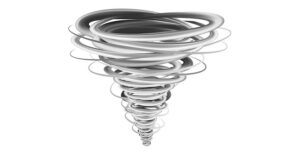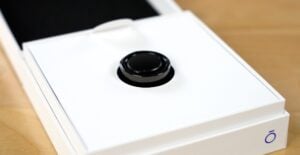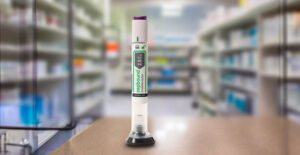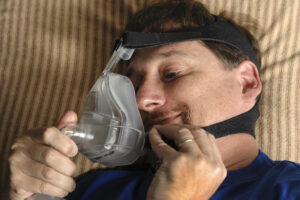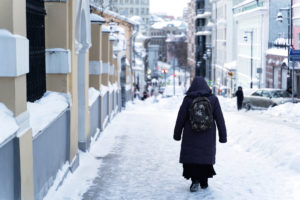AI Program Shows Promise In Predicting Health Risks From Sleep Apnea

As interest, ideas and investments in AI have expanded in recent years, so has its potential in medicine. With today’s powerful AI tools, physicians are better equipped to accurately diagnose diseases, deliver critical treatments, and provide quality care for their patients, while researchers are able to unlock next level findings to influence future generations of patient care.
Recently, researchers at the Mt. Sinai Health System were awarded a five-year, $4.1 million grant to develop and test the artificial intelligence-powered model they built to predict health complications from OSA. The AI model they created has the potential to predict a range of high- and low-risk OSA outcomes, such as daytime sleepiness, depression, heart disease, and hypertension, more accurately than current methods.
It’s estimated that obstructive sleep apnea (OSA) affects almost 1 billion people across the world. As one of the most common sleep disorders in the U.S., there is significant motivation for healthcare providers to better understand sleep apnea and its health consequences.
Currently, physicians use the apnea-hypopnea index (AHI) from a patient’s sleep study to determine their OSA’s severity and the effects it may have on their health. It indicates how many times, on average, they stop breathing or have shallow breathing during an hour of sleep. In recent years, experts have begun examining and criticizing AHI readings because they can’t forecast OSA’s effects on patients’ health particularly well.
The Mt. Sinai team’s AI program evaluates data from several sleep study parameters commonly impacted by OSA, such as breathing, oxygen levels, and sleep stages, to calculate a probability score indicating a patient’s level of risk for complications. According to the research team, one AI model using data from 4,700 participants could predict death due to heart disease with up to 81% accuracy, while predictions based on a current model are only 58% accurate.

The researchers also used a model for lower-risk issues like daytime sleepiness. Early data from close to 11,000 study participants across three groups suggests the model can predict sleepiness with up to 87% accuracy, compared to the AHI index’s 54%.
The grant from the National Heart, Lung, and Blood Institute will allow the team to test their AI models on Mt. Sinai Integrative Sleep Center patients over three months. They will measure and record patients’ brain waves, breathing, heart rates, and oxygen levels, then analyze and validate the findings against existing data.
Anit Parekh, Ph.D., principal investigator and assistant professor of medicine says, “Our study will assess the real-world performance of an AI approach and offer crucial evidence needed to translate metrics… into clinical practice.”
The researchers believe that honing their existing model and gathering more patient data will give physicians higher-quality tools to diagnose and treat patients with OSA. The grant reflects an innovative step forward in better understanding how OSA affects people’s health.
Got a hot tip? Pitch us your story idea, share your expertise with SleepFoundation.org, or let us know about your sleep experiences right here.
References
5 Sources
-
Mount Sinai Researchers Awarded $4.1 Million NIH Grant to Advance Understanding of Sleep Apnea Using Artificial Intelligence | Mount Sinai – New York. (n.d.). Mount Sinai Health System., Retrieved March 4, 2024, from
https://www.mountsinai.org/about/newsroom/2024/mount-sinai-researchers-awarded-41-million-nih-grant-to-advance-understanding-of-sleep-apnea-using-artificial-intelligence -
Slowik, J. M., & Collen, J. F. (2022, December 11). Obstructive Sleep Apnea. PubMed; StatPearls Publishing.
https://www.ncbi.nlm.nih.gov/books/NBK459252/ -
Holder, S., & Narula, N. S. (2022). Common Sleep Disorders in Adults: Diagnosis and Management. American Family Physician, 105(4), 397–405.
https://pubmed.ncbi.nlm.nih.gov/35426627/ -
Pevernagie, D. A., Gnidovec‐Strazisar, B., Grote, L., Heinzer, R., McNicholas, W. T., Penzel, T., Randerath, W., Schiza, S., Verbraecken, J., & Arnardottir, E. S. (2020). On the rise and fall of the apnea−hypopnea index: A historical review and critical appraisal. Journal of Sleep Research.
https://onlinelibrary.wiley.com/doi/10.1111/jsr.13066 -
Malhotra, A., Ayappa, I., Ayas, N., Collop, N., Kirsch, D., Mcardle, N., Mehra, R., Pack, A. I., Punjabi, N., White, D. P., & Gottlieb, D. J. (2021). Metrics of sleep apnea severity: beyond the apnea-hypopnea index. Sleep, 44(7).
https://academic.oup.com/sleep/article/44/7/zsab030/6164937





